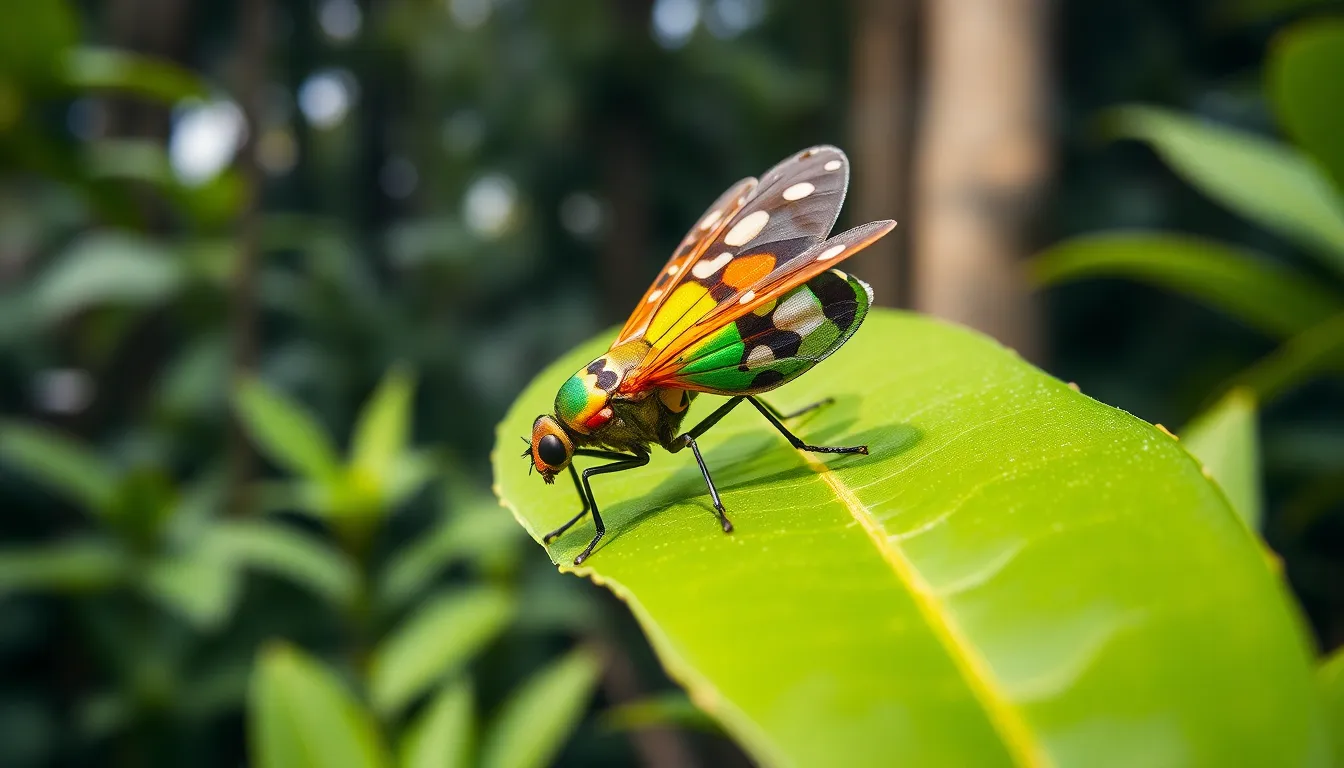In the lush landscapes of Vietnam and Cambodia, a new star has emerged that’s turning heads—and not just because it’s a bug with a flair for the dramatic. Enter the latest species of lanternfly, a dazzling critter that’s more than just a pretty face. With its vibrant colors and unique patterns, this little insect is here to steal the spotlight and possibly your garden’s lunch.
Table of Contents
ToggleOverview of Lanternfly Species
Lanternflies belong to the family Fulgoridae, a group of plant-feeding insects known for their distinctive looks and behavior. They possess vibrant colors and intricate patterns that make them stand out in their natural habitat. Each species has adapted to thrive in specific environments, which influences their feeding patterns and behaviors.
Recent discoveries in Vietnam and Cambodia point to the emergence of a new lanternfly species. Researchers identified this species based on its unique morphological traits and geographical distribution. Observations show that these insects primarily feed on sap from various plant species, potentially impacting local agriculture and ecosystem health.
In terms of reproduction, lanternflies exhibit a significant rate of population growth. They lay eggs in masses, protecting them with a waxy coating. This allows them to survive adverse conditions and increases their chances of establishing new populations in different areas.
Notably, the newly found species mirrors many characteristics of previously known lanternfly species but also displays distinct features. Morphological studies emphasize size variations and color differences, which aid in species identification. Such distinctions prompt continued research to understand the ecological implications of the newly discovered species.
Effective management strategies must be developed to mitigate the potential threat posed by this lanternfly species. Preventative measures include monitoring its spread and implementing targeted controls to minimize damage to crops and gardens in affected regions. Understanding these dynamics will enhance efforts to protect local biodiversity.
Vietnam Cambodia New Lanternfly Species

The newly discovered lanternfly species in Vietnam and Cambodia captures attention due to its striking appearance and ecological implications.
Identification and Characteristics
Distinct features define this species, including vibrant colors and unique patterns. Researchers noted that its morphology differs from previously documented lanternflies. Size typically ranges from 3 to 5 centimeters in length. Identifiers include wing markings and body shape variations that aid in distinguishing it from related species. Each individual displays a waxy coating on its eggs, which provides protection against environmental threats. Such characteristics indicate its adaptation to local ecosystems and suggest potential impacts on plant life.
Habitat and Distribution
This lanternfly species thrives in diverse habitats across Vietnam and Cambodia. Forests, agricultural areas, and urban gardens serve as primary locations for its activities. Observations indicate a tendency towards humid environments, favoring local flora as hosts. Range includes regions near rivers and wetlands, providing the necessary conditions for survival. The species demonstrates a growing presence, leading to concerns regarding its spread into new areas. Identifying its distribution patterns is crucial for formulating management strategies and protecting local biodiversity.
Ecological Impact
The newly discovered lanternfly species in Vietnam and Cambodia significantly disrupts local ecosystems. Feeding on sap from various plants, it directly harms a range of vegetation. Plants weakened by sap consumption face increased vulnerability to diseases. Wildlife depending on these plants for habitat or food may experience shifts in behavior and population dynamics. Biodiversity suffers as the introduction of this species alters ecological balances.
Effects on Local Flora and Fauna
Local flora stands at risk due to the sap-sucking behavior exhibited by this lanternfly species. The weakened state of plants can lead to reduced growth and diminished reproductive success. Various vertebrates and invertebrates that rely on these plants for sustenance face food scarcity. Species that thrive in specific niches may decline or vanish entirely as their food resources diminish. Changes in plant health can also influence local insect populations, disrupting existing food chains.
Economic Implications
The economic ramifications of this lanternfly species extend to agriculture and horticulture. Farmers may encounter lower crop yields due to sap feeding, adversely affecting their livelihoods. Increased production costs may arise from the need to implement pest control measures. Local markets could experience fluctuations as supply diminishes, leading to higher prices for affected crops. Communities dependent on agriculture may face further economic strain, highlighting the need for strategic management.
Conservation Efforts
Efforts to conserve the newly discovered lanternfly species in Vietnam and Cambodia are essential in mitigating its impact on local ecosystems and agriculture. Organizations and local governments are collaborating to develop monitoring programs aimed at tracking its spread. Researchers are conducting studies to better understand the species’ behavior and its ecological effects on surrounding flora and fauna.
Public awareness campaigns focus on educating communities about the lanternfly’s potential threats. Information sessions outline how to identify this species and the importance of reporting sightings promptly. Local residents play a crucial role in conservation efforts, as their observations can help track distribution patterns.
Management strategies include implementing targeted control measures that minimize the lanternfly’s spread while protecting beneficial insects. Integrated pest management approaches combine biological control methods and habitat management to curb its population growth effectively. Scientists stress the importance of continuous research to adapt these strategies to evolving situations.
Field studies evaluate the lanternfly’s interactions with various plant species to identify which are most susceptible. Data gathering will provide insights into how these interactions might affect local ecosystems over time. Collaboration with agricultural experts ensures that farmers receive guidance on protective practices to safeguard their crops from the lanternfly’s sap-feeding behavior.
While conservation initiatives hold promise, ongoing support from governmental and non-governmental organizations is crucial. Funding allocations will facilitate research, public education, and the development of effective control measures. Prioritizing these efforts may prove vital in preserving local biodiversity and ensuring the health of agricultural systems threatened by the newly discovered lanternfly species.
The discovery of this new lanternfly species in Vietnam and Cambodia highlights the urgent need for vigilance in managing its potential impact. With its rapid population growth and sap-feeding behavior, it poses a significant threat to local ecosystems and agriculture. Effective management strategies are essential to mitigate its spread and protect biodiversity. Collaborative efforts among researchers, local governments, and communities will play a crucial role in addressing the challenges posed by this insect. By raising awareness and implementing targeted controls, it’s possible to safeguard both plant health and agricultural productivity in affected regions. Ongoing research and monitoring will be key to understanding this species and ensuring the resilience of local environments.







